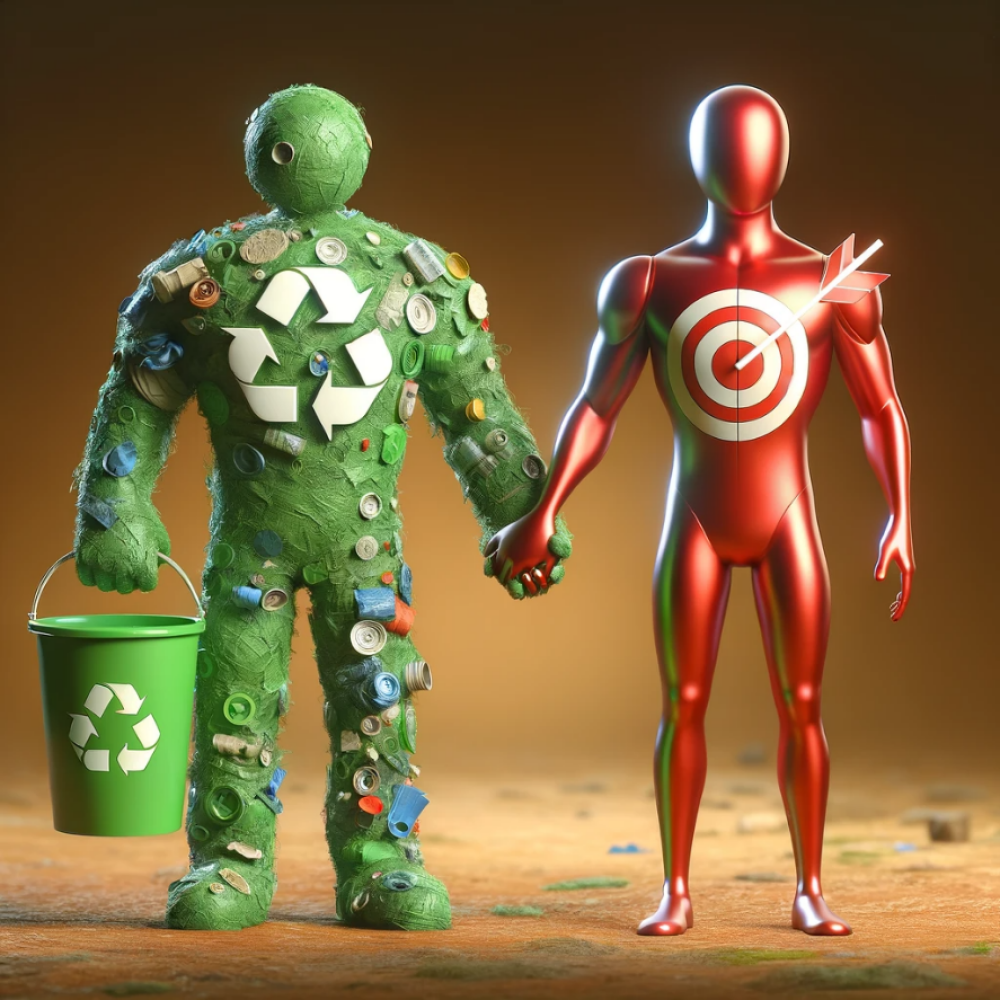Redefining Sustainable Print Marketing
31 Jan 2024

In the dynamic world of marketing, there's a prevalent but oversimplified belief that digital marketing is inherently more sustainable than print marketing. This assumption is based on the visible environmental impact of print marketing, primarily the use of paper. However, when we delve deeper, it becomes clear that digital marketing also has significant ecological costs, often overlooked in mainstream discussions.
Digital marketing's hidden environmental toll lies in its reliance on data centres. These centres, vital for storing vast amounts of digital information and keeping the online world operational, consume large quantities of electricity. Much of this electricity is generated from non-renewable sources, contributing to greenhouse gas emissions. Additionally, digital marketing depends on a constant supply of electronic devices, from smartphones to laptops. The production of these gadgets involves extracting scarce metals and other finite resources, leading to further environmental degradation.
In contrast, print marketing, often criticized for its paper usage, has shown remarkable resilience and effectiveness, particularly in direct mail campaigns. This is evident even among brands with a strong online presence and a commitment to sustainability, such as those with B Corp accreditation. Print marketing's ability to cut through the digital noise and capture consumer attention demonstrates its lasting value.
When it comes to sustainability in print marketing, the focus typically shifts to the materials used. This includes opting for recycled and uncoated paper, using vegetable-based inks, and moving away from environmentally harmful finishes like UV gloss and laminations. While these are significant steps towards a more sustainable approach, they are just the tip of the iceberg.
One key aspect of enhancing a print campaign's sustainability is improving its performance. The rationale is straightforward yet powerful: the more effective your print materials are in eliciting a response or action, the less waste is generated. Every piece that achieves its marketing goal is a resource well-used, not wasted.
This is where precision targeting comes into play.
By analysing customer data and identifying patterns, marketers can create 'lookalike' audiences - groups that resemble their existing customer base. In my world of Door Drops, this means focusing on areas where the concentration of these lookalike audiences is highest. The more closely the recipients match the intended audience, the more efficient and sustainable the campaign becomes.
However, targeting is only part of the equation. The content of the campaign is equally critical. It must be compelling, well-designed, and executed in a manner that maximises engagement and response rates.
Creating sustainable marketing campaigns is about more than just using eco-friendly materials; it's about ensuring that these campaigns are effective. A campaign could be printed by a carbon-neutral firm on paper made with wind power, avoiding harmful chemicals and delivered using electric vehicles. Yet, if such a campaign fails to resonate with its audience and drive the desired action, its sustainability is undermined.
In optimising the materials used in print marketing, it's essential to maximise their use. For example, printing on both sides of the page is a simple yet effective way to use paper more efficiently. It’s also about creatively using every part of the mailing material. The envelope, often overlooked, provides another surface for storytelling and engagement.
Integrating print and digital marketing strategies can also enhance sustainability. Encouraging digital responses to a print campaign, such as online payments or donations, can significantly reduce the environmental impact. This approach also caters to the growing preference for digital transactions, as evidenced by the decreasing use of cheques in the charity sector. QR codes can seamlessly link print materials to digital platforms, offering a trackable, interactive customer experience.
Furthermore, the life cycle of a print marketing piece doesn't end with the recipient. Encouraging sharing can dramatically increase its reach and effectiveness. A single piece of print material that is passed along to others multiplies its impact without additional resource use. Lastly, promoting recycling of the materials, backed with informative messaging about its environmental benefits, reinforces the sustainability message.
In conclusion, sustainability in print marketing is an intricate balance that goes far beyond the choice of paper. It encompasses effective targeting, compelling content, efficient use of materials, integration with digital strategies, and considering the entire lifecycle of the marketing material. By rethinking sustainability in these broader terms, marketers can create campaigns that are not only environmentally responsible but also commercially effective.
Written by Chris Rothwell from The Letterbox Consultancy

Please login to comment.
Comments